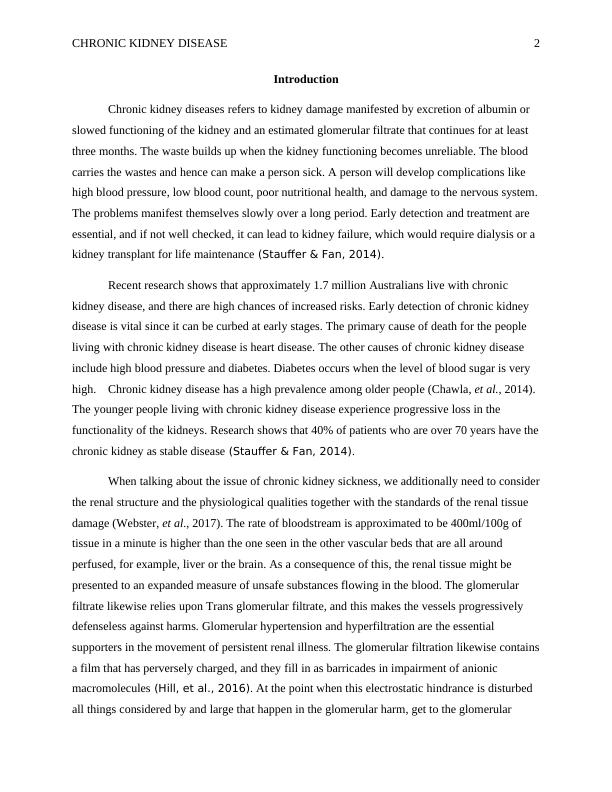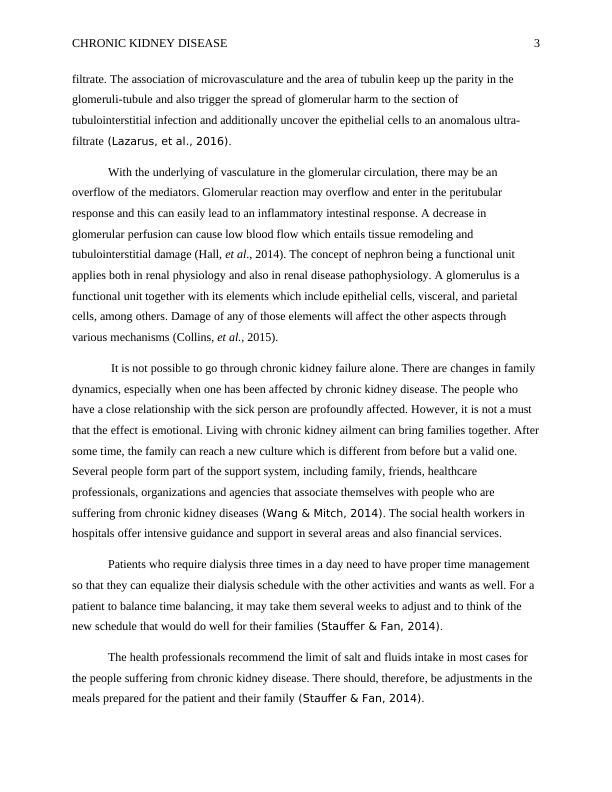Chronic Kidney Disease: Causes, Symptoms, and Management
7 Pages2605 Words251 Views
Added on 2022-11-29
About This Document
This article provides an overview of chronic kidney disease, including its causes, symptoms, and management. It discusses the importance of early detection and treatment, as well as the impact of the disease on individuals, families, and communities. The article also explores various strategies for promoting health and preventing the spread of chronic kidney disease. Study material and expert advice on this topic can be found on Desklib.
Chronic Kidney Disease: Causes, Symptoms, and Management
Added on 2022-11-29
ShareRelated Documents
End of preview
Want to access all the pages? Upload your documents or become a member.
Disease Pathophysiology and Concept Map
|9
|2013
|309
Diabetes and Kidney Failure: Pathophysiology and Treatment
|8
|2127
|484
Diagnosis Renal Failure Stage
|7
|1948
|37
Pathophysiology of Obesity and Diabetic Kidney Disease
|3
|1605
|40
Renal and Genitourinary System
|4
|846
|395
Understanding Renal Failure: Causes, Symptoms, and Treatment
|13
|3239
|39



